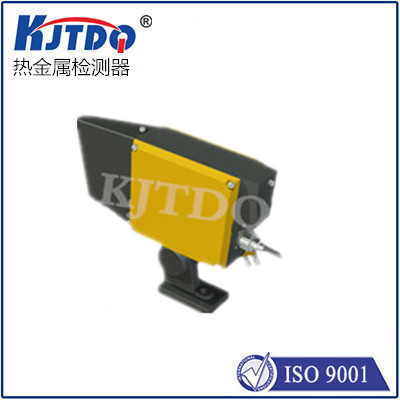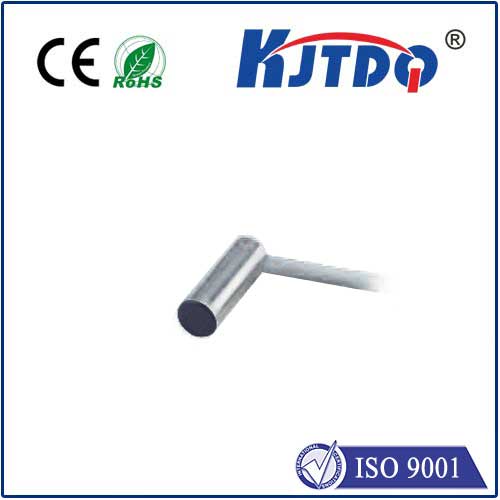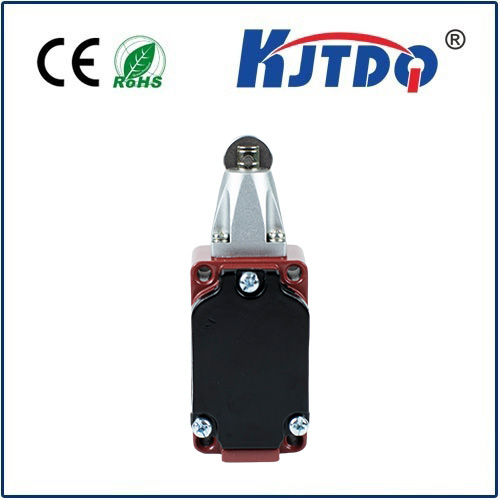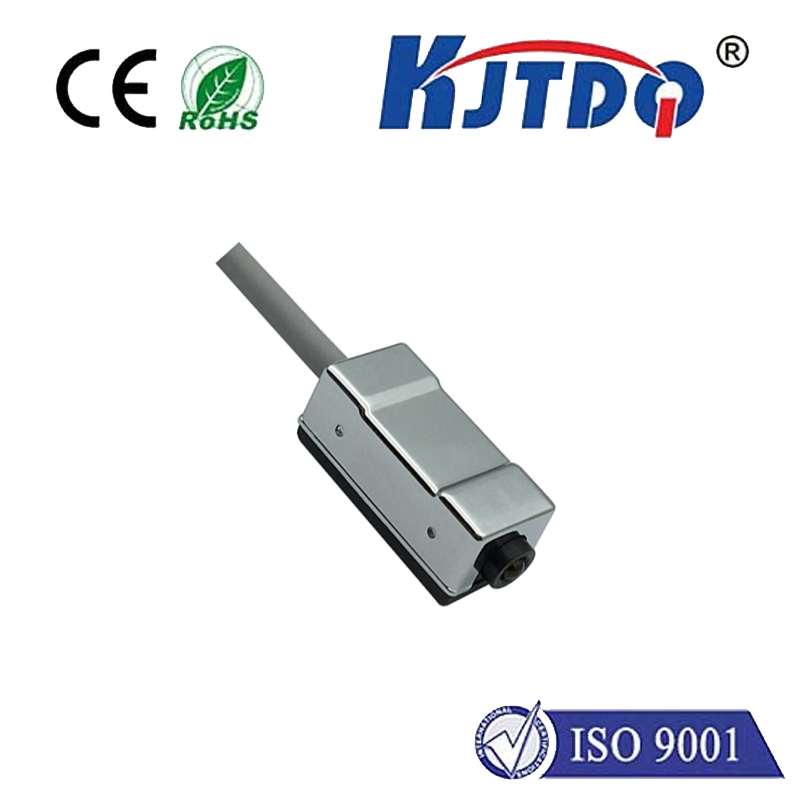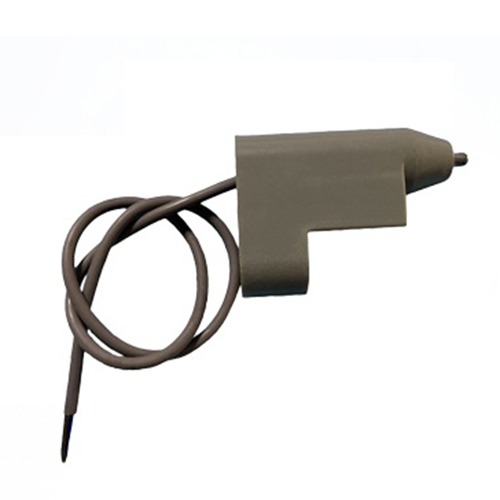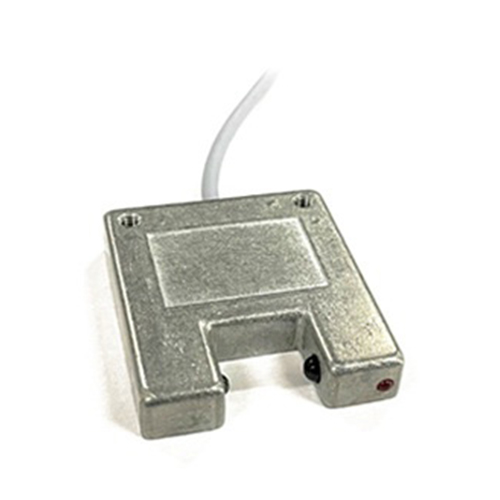ring proximity sensor inductive
- time:2025-09-09 04:24:11
- Нажмите:0
Unveiling the Powerhouse: Your Guide to Inductive Ring Proximity Sensors
Imagine a silent, tireless guardian within a noisy factory or a sophisticated machine. Its sole purpose? To know, without physical contact, the precise presence or absence of a critical metal component whizzing by or nestled deep within a mechanism. This isn’t science fiction; it’s the everyday reality enabled by inductive ring proximity sensors. These specialized versions of the ubiquitous inductive proximity sensor offer unique solutions where conventional barrel-shaped sensors simply won’t fit or function optimally. Understanding their design, principles, and vast potential is key to unlocking automation efficiency and reliability.
Beyond the Barrel: The Ring Sensor Distinction
Standard inductive proximity sensors are typically cylindrical (“barrel” types). While incredibly versatile, their solid physical form poses a limitation: they need to approach the target object from the side. Enter the датчик кольцевого сближения. Its defining feature is a hollow center – a doughnut-shaped aperture through which the target object can pass axially. This fundamental design shift opens up a world of applications impossible for barrel sensors. Picture detecting the head of a bolt on a conveyor passing straight through, verifying the presence of a metallic shaft end within a bore, or counting metal discs traveling down a chute. The ring geometry provides a non-obstructive sensing point directly in the path of movement.
The Core Principle: Electromagnetic Induction in Action

Regardless of shape, the heart of an inductive proximity sensor operates on Faraday’s Law of Electromagnetic Induction. Here’s the essence:
- The Oscillator: The sensor contains a coil wound around a ferrite core (shaped into a ring for this sensor type). This coil is part of an oscillator circuit generating a high-frequency electromagnetic field that radiates outwards from the face and through the center aperture.
- The Eddy Current Effect: When a conductive metal target (steel, aluminum, brass, copper, etc.) enters this oscillating magnetic field, it induces swirling electrical currents within the target material itself. These are called eddy currents.
- Energy Drain & Detection: The generation of eddy currents draws energy from the sensor’s oscillating field. This energy loss causes a measurable change in the amplitude of the oscillation.
- Signal Processing: The sensor’s built-in electronic circuitry continuously monitors this oscillation amplitude. Once a predefined threshold change (indicating sufficient proximity) is detected, the circuit triggers a solid-state switch (usually PNP or NPN transistor).
- Output Signal: This switch operation changes the sensor’s output state – typically switching from “Off” to “On” (or vice-versa in Normally Closed mode) – providing a clear electronic signal to the connected control system (PLC, counter, etc.).
Why Choose a Ring? Key Advantages
The датчик кольцевого сближения shines in specific scenarios, offering compelling benefits:
- Axial Target Approach: Its central aperture allows targets to pass directly through the sensor, enabling detection in tight spaces or linear paths where lateral mounting is impractical.
- Non-Contact Operation: Like all inductive sensors, it detects without physical touch, eliminating wear and tear on both the sensor and the target. This translates to exceptional longevity and minimal maintenance.
- Robustness: Built for industrial environments, these sensors typically boast high IP ratings (like IP67 or IP69K) for resistance to dust, water, and washdowns. They are also resistant to vibration and shock.
- High Switching Frequency: Capable of detecting very fast-moving objects, often switching reliably at frequencies exceeding 10-15 kHz, ideal for high-speed counting or positioning.
- Immunity: Immune to ambient light, dirt (unless coating the active face excessively), oils, and non-conductive materials. They excel where optical sensors might struggle.
- No Moving Parts: The solid-state design ensures reliability and longevity.
- EMI Resistance: Well-designed models offer significant resistance to electromagnetic interference common in industrial settings.
- Repeatability: Provides highly consistent and accurate switching points.
Where They Reign: Diverse Applications
The unique form factor of the inductive ring proximity sensor makes it indispensable across numerous sectors:
- Manufacturing Automation: Detecting parts on conveyors passing through the ring, verifying insertion of metal components (like pins or shafts), presence detection of fasteners (bolts, nuts), monitoring turret punch tool positions.
- Assembly Lines: Confirming positioning of metal parts being assembled axially, end-of-shaft detection in automated assembly.
- Packaging Machinery: Monitoring metal components within machines (e.g., capping heads), detecting metal parts on linear tracks.
- Robotics: End effector tooling verification (ensuring a metallic gripper or tool is present), precise positioning feedback for metal parts handled by the robot.
- Перевозка материалов: Counting metal items (disks, washers, tubes) passing down chutes.
- Станки: Monitoring tool presence in holders, spindle positioning, workpiece detection.
- Automotive: Engine block component verification, drivetrain assembly checks, robotic welding cell part positioning.
Selecting the Right Ring Sensor: Critical Considerations
Choosing the optimal inductive ring proximity sensor requires careful attention to several parameters:
- Inner Diameter (I.D.): This is the size of the aperture. Crucially, it must be large enough to allow the target object to pass through freely without contact. Measure the maximum cross-section of your target.
- Sensing Distance (Sn): This is the nominal distance (typically listed as a value like 1mm, 2mm, 5mm) at which a standard target (usually mild steel) will reliably trigger the sensor. Remember, this distance is measured radially from the inner face of the ring towards the center. Factors like target material, size, and shape significantly influence the effective sensing distance. Smaller targets and non-ferrous metals reduce Sn.
- Target Material: Ferrous metals (like steel, iron) provide the longest sensing range. Non-ferrous metals (aluminum, brass, copper) require significantly less Sn – often only 30-60% of the rated Sn for steel. Stainless steel also reduces Sn. Always check the sensor specifications for correction factors.
- Target Size: The target must be large enough to sufficiently disturb the oscillating field. It generally needs to be larger than the sensor’s face width (the radial thickness of the ring) and cover a significant portion of the ring’s inner diameter.
- Switching Frequency: How fast does the target move past the sensor? Ensure the sensor’s maximum switching frequency exceeds your application’s requirements.
- Output Type: PNP (sourcing) or NNP (sinking)? Normally Open (NO) or Normally Closed (NC)? This must match your control system input requirements. Some sensors offer configurable outputs.
- Electrical Connection: Cable exit (axial or radial) or connector type (e.g., M8, M12). Consider cable length and strain relief requirements.
- Environmental Ratings: Ensure the IP rating aligns with your environment (dust, moisture, washdown, oils, coolants). Material of construction (e.g., nickel-plated brass, stainless steel) is also vital for chemical resistance. Operating temperature range is another key factor.
- Mounting: Consider how the sensor will be secured. Flange mounting is common, requiring precise positioning relative to the target path.
Installation and Positioning: Getting it Right
- Mounting Stability: Secure the sensor firmly to prevent vibration from causing false triggers

